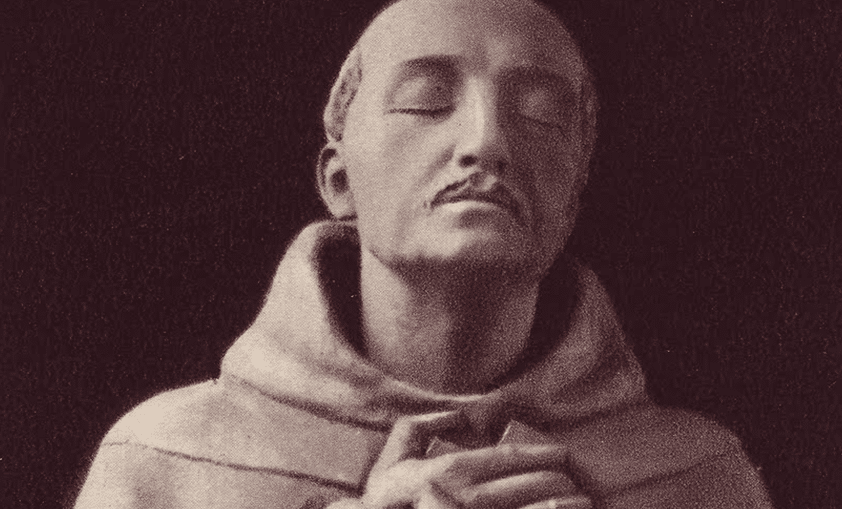Many of us know intellectually that suffering can be an instrument to help us grow in holiness and advance in our spiritual lives. But it’s not always easy to feel this to be true when we’re in the midst of our sufferings. This is especially true our suffering is caused by more abstract problems like loneliness or feeling misunderstood.
Like many saints, Saint John of the Cross endured a large amount of suffering during his life, and yet he grew to great heights of holiness. But his suffering was not just the type of common physical suffering that many of the saints endured. Rather, he suffered as a result of conflicts and misunderstandings among those who should have been his friends.
As we celebrate St. John of the Cross’s feast day this December, many of us would do well to look to his example of holiness amidst the sufferings of being misunderstood by those around us.
A holy early life

St. John of the Cross was born in Spain in 1542. Even though John’s father came from a rich background, his father’s family disowned his father for marrying a woman below their class.
Because of John’s family situation, he suffered from poverty as a child. This poverty became worse when his father died just three years after John was born.
Soon after the death of John’s father, John’s older brother died. Though the cause of his brother’s death is not known for certain, it was likely caused by malnutrition.
Though it seemed that John’s childhood lacked all advantages, his poverty was actually fortuitous. It led his mother to enroll him in a school for poor children. At this school, John received a strong religious education.
As he was being formed in the faith as a child, John began to have an interest in pursuing holy things. He chose to work in a hospital and to serve as an acolyte. Soon, he began to pursue a religious and priestly vocation.
Early days as a Carmelite

In 1563, John entered the Carmelite religious order when he was twenty-one years old. He also began to study of philosophy and theology at a university so he could be ordained a priest.
Four years after entering the Carmelites, John was ordained to the priesthood. But he was unsure that he was in the religious order God willed for him. He felt drawn to the austerity of the Carthusians.
Around the time that John was considering leaving the Carmelites and joining the Carthusians, he met Saint Teresa of Avila. She was committed to reforming the Carmelite order, which had fallen into laxity. She wished to bring the order back to the strict asceticism it had originally practiced.
Teresa asked John to become her confessor and spiritual director. He agreed, and he began to join in her work of Carmelite reform.
A man caught in conflict

Because of the reform work that St. Teresa and St. John of the Cross were attempting to do in the Carmelite order, a conflict began to form within the order starting around the year 1575.
The Carmelites in favor of reform were called the Discalced (which means “barefoot”) Carmelites because, among other things, they advocated for the members to return to the original penitential practice of going barefoot or wearing only sandals.
As the conflict between the Discalced Carmelites and the ordinary Carmelites began to escalate, John was ordered to leave his monastery in Avila.
But the papal nuncio had already given John permission to remain there and continue his reform work, so he ignored the order to leave and followed the permission from the higher authority.
Not long after this, a group of ordinary Carmelites went so far as to kidnap John away from his monastery in Avila. They brought him to Toledo, to the main Carmelite house.
There, John was tried for disobedience. He was found guilty and sentenced to a very harsh punishment.
Imprisonment, suffering, and escape

John was imprisoned in a small cell. He was given very little food to eat and was whipped in public once each week.
Though he was very alone in his sufferings, John was able to convince one of the more sympathetic friars to smuggle him some paper. Using this paper, John passed his time by writing religious poetry.
After John had been imprisoned for nine months, he had the opportunity to escape. His treatment had been so harsh that he had to recover for six weeks in the hospital.
In 1580, Pope Gregory officially approved of John’s reform work by approving of the split between the Discalced Carmelites and the ordinary Carmelites. This meant that John was no longer under the authority of the ordinary Carmelites who had treated him so harshly.
After this, John traveled throughout Spain to establish more Discalced Carmelite houses. In 1591, he contracted a skin disease and infection, from which he died a few months later.
John’s perseverance and holiness during his terrible treatment at the hands of other Carmelites had a great influence on the Church for centuries to come.
The religious poetry that John wrote during his imprisonment, as well as his many other writings on the mystical and spiritual life, are still widely known and read today. His work in reform and in spirituality have helped countless people to grow in holiness.
St. John of the Cross is considered to have been one of the great figures of the Counter-Reformation in Spain, and he was named a Doctor of the Church.
St. John of the Cross, pray for us!
Ready to meet other single Catholics who share your love of the saints? Join Catholic Singles and start connecting with our members in less than ten minutes! Download the app today.



